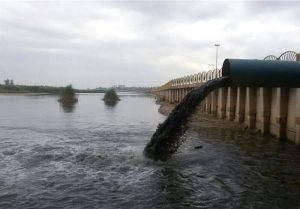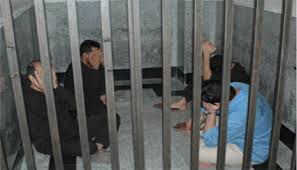
The Gulf is Arab according to geography, history and the rule of international law
The dispute between Arab states and Iran over the name of the gulf that separates the Arabian Peninsula and the current state of Iran, whether it is an Arab or a Persian Gulf, is renewed from time to time. Arabs consider it an Arab Gulf, while Iran insists it is a Persian Gulf. Here are some examples that demonstrate the depth of this dispute: 1- Following the announcement of the ministers of information of the Gulf Arab states in the 1970s about the establishment of the (Arab Gulf News Agency), former Shah of Iran, Mohammad Reza Pahlavi, decided to withdraw Iranian ambassadors from all Gulf countries in protest against the use of the name (Arabian Gulf).
This forced the ministers to urgently decide to remove the word “Arab” from the agency’s name. 2- As a compromise to avoid any conflict with Iran, the Gulf Arab states have been keen to remove the word “Arab” from the name of the Gulf when establishing any institution, organization, or holding any sports event, meeting, or seminar in any field of cultural, economic, political, or social domains. Even the Cooperation Council has been officially named the “Cooperation Council for the Arab States of the Gulf”, so the word “Arab” in this name refers to the countries and not the Gulf. This description is not without legal benefit; it confirmed that membership of this council is limited to the Arab Gulf states, and that Iran cannot request to join this council.
3- Iran did not meet the Arab appeasement with the same, and insisted on naming the Gulf as the (Persian Gulf), and in October (October) of 2009 the Arab Gulf countries objected to Iran putting the phrase (Persian Gulf) on the medals and certificates that will be distributed to the winners in the Islamic Solidarity Tournament for the athletics championship that was to be hosted by Iran,
The Gulf Arab countries threatened that they would not participate in this tournament unless the phrase (Persian Gulf) was replaced by the Arabian Gulf or the word (Gulf) was used alone without a description. Iran refused to respond to this demand, so the Islamic Solidarity Sports Federation was forced to cancel this tournament. 4- On 21/2/2010, the Iranian authorities expelled a Greek air host from his job in the Iranian Kish Air Company because he used the phrase (Arabian Gulf) instead of (Persian Gulf). As a result, the Iranian Minister of Transport announced that flights of foreign airlines coming from Arab countries would be prevented from flying over their airspace if the phrase “Arabian Gulf” was used.
5- On May 7, 2010, the Iranian authorities closed the booth of an Arab publishing house participating in the Tehran International Book Fair because it was marketing a book in Arabic that used the phrase (Arabian Gulf) and not (Persian Gulf). In 2004, Iran banned entry to the American National Geographic magazine for using the phrase “Arabian Gulf” instead of “Persian Gulf”. Some commentators believe that the Gulf is neither Arab nor Persian, but rather Arab-Persian, because its western coast is Arab overlooked by seven Arab countries, and its eastern coast is Persian overlooked by Iran.
This statement is correct if we consider the logic of the current reality, but it is incorrect if we resort to the facts of geography, history, and the rules of international law. In front of me is a book written by Professor Qadri Qalaji titled “The Arabian Gulf.. Sea of Myths” which was published in its second edition in Beirut in 1413 AH (1992). The first part of this book begins with a chapter entitled “The Gulf, is it Arab or Persian?” and the author answered this question in light of the facts of geography and history. Here, we summarize briefly the most important facts he mentioned in this regard as follows:
First: The name given to the Gulf in ancient times, as indicated by the Akkadian inscriptions, was: the Lower or Bitter Sea, opposite to it the Upper Sea, which is the Mediterranean Sea. Second: It is most likely that the Macedonian Emperor Alexander the Great, who aspired to bear the title (King of the World), was the first to call it the (Persian Gulf). This emperor sent his fleet, led by Prince Niarchos, to the Indian Ocean in search of geographical discoveries in the sources of the sun, in an adventure Scientific freedom is one of the most amazing adventures that took place in ancient times.
Niarchos returned from India to Iraq in the years 326-325 BC. Through the Gulf to explore the waters of the Euphrates River and discover its mouth, then he followed his fleet to the course of the Karun River to land his travels at the city of Susa, where Alexander was waiting for him. Thus, the Macedonian admiral did not know on this trip except to the eastern coast of the Gulf, i.e. the Persian coast, and the Arab coast remained unknown to him. Which prompted the emperor to call the Gulf by that name, and it remained in circulation, by way of frequency. In recent times, the Ottomans called the Gulf the name (Basra Bay), while the residents of Al-Ahsa used to call it (Qatif Bay).
However, since the first century AD, we see a famous researcher, the Roman author and historian Pliny, who was born in 62 and died in 113, referring to the Gulf by its correct name, the Arabian Gulf, in his description of the city of Charax, which researchers believe is the Arab state of Ahwaz on the eastern shore of the Arabian Gulf.
Third: The western coast of the Gulf is an integral part of the land of the Arabian Peninsula, and accordingly, its Arabness is absolutely indisputable. As for the eastern coast, which is now under Iranian control, the facts of history and human geography confirm its Arabism. In this regard, the author points out that the first person to notice the Arabism of the eastern coast of the Gulf was the Danish pioneer Carsten Niebuhr, who toured the Arabian Peninsula in 1762 (1176 AH) and came out to the world in 1772 (1186 AH) with a huge book on travel literature.
And he said about that on the eastern coast on the eighth page of his book: (Travels in the Arabian Peninsula and Other Countries in the East). (But I cannot pass with equal silence, the more important colonies, which, though established outside the frontiers of Arabia, are nearer to it. I mean the Arabs inhabiting the coast south of Persia, mostly allied with, or subject to, the neighboring sheikhs.
Various circumstances agree to indicate that these tribes settled on the Persian Gulf before the conquests of the caliphs, and they have always maintained their independence. The sea is in their own country, but they tolerated, reluctantly, that this coast should remain the property of the Arabs. Then the author mentions that Niebuhr reaffirmed this subject elsewhere in his book and in more detail, and he said on pages 137-138 the following: (Our geographers made a mistake, I think, when they depicted for us a part of the Arabian Peninsula under the rule of the Persians, because the Arabs are the ones who own,
In contrast, almost all the sea coasts of the Persian Empire from the mouth of the Euphrates to the mouth of the Indus. It is true that the settlements located on the Persian coasts do not belong to the Arabian Peninsula itself, but given that it is independent of Persia, and because its people have the language and customs of the Arabs, I meant to give a brief overview of them. It is impossible to determine the time when the Arabs established these colonies on the coast.
According to ancient accounts, these settlements were established since ancient times. By examining the few hints that were mentioned in ancient history, it can be speculated that these Arab colonies were established during the reign of the first Persian kings. Nader Shah had planned to capture these Arabs and move them to the shores of the Caspian Sea, and replace them with Persians, but his tragic death prevented the execution of this plan, and the continuous unrest in the land of the Persians prevented them from encroaching upon the freedom of these Arabs.




